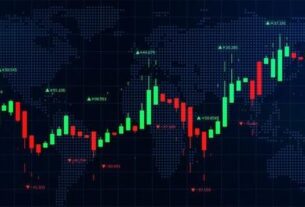Lens Technology Co., Ltd., a Shenzhen-listed supplier to Apple Inc., is pursuing a Hong Kong listing that could raise up to HK$4.8 billion (about US$606 million). The share sale involves selling 262 million new shares at a price range of HK$17.38 to HK$18.18 each, representing a discount of up to 28% to Lens Technology’s last traded price in Shenzhen, which closed at 22.06 yuan. The company projects that its Hong Kong shares will commence trading on July 9, giving it a new cross-border trading foothold as part of a broader trend among mainland Chinese firms expanding access to international investors. Lens Technology is positioning the Hong Kong listing as a strategic move to diversify funding sources while scaling its growth initiatives in product diversification, geographic reach, and manufacturing capacity.
Lens Technology’s Hong Kong listing details and market context
Lens Technology, based in Changsha, is best known for manufacturing mobile phone glass covers and a range of other components for consumer electronics. The upcoming share sale in Hong Kong is designed to raise up to HK$4.8 billion, equivalent to approximately US$606 million. The IPO involves the sale of 262 million new shares, priced between HK$17.38 and HK$18.18 per share. The pricing range indicates a potential discount of up to 28% versus the Shenzhen closing price of 22.06 yuan, underscoring the common investor-relations dynamic in Hong Kong offerings where primary issuances are priced to attract broad investor participation while balancing sponsor expectations and market demand.
The anticipated listing in Hong Kong is set against a backdrop of robust cross-border fundraising activity, as Chinese companies that are already listed on mainland exchanges seek to broaden their investor bases in Hong Kong. This trend has become a defining feature of the year, with onshore Chinese markets facing fundraising constraints while Hong Kong provides an alternative venue for equity capital. In Lens Technology’s case, the company aims to leverage Hong Kong’s international investor base to amplify liquidity and valuation visibility, while maintaining its established footprint in the mainland market.
Investors can expect Lens Technology to use the proceeds from the share sale to fund strategic growth initiatives. The company plans to expand its product and service portfolio, broaden its overseas presence, increase production capacity, and advance its push toward vertical integration within the smart-manufacturing ecosystem. These objectives align with the broader strategic thesis among hardware component suppliers that seek to diversify revenue streams beyond a single major customer, while also capturing incremental opportunities in higher-value products and international markets.
Beyond the pricing and allocation mechanics, the Hong Kong listing is part of a wider market phenomenon: deals by Chinese exporters with mainland roots have comprised roughly three-quarters of Hong Kong’s listing proceeds so far this year. That trend reflects both the appeal of HK as a global financial hub and the continued appetite among local and international investors for exposure to Chinese manufacturing and technology supply chains. At the same time, the onshore Chinese fundraising environment remains constrained relative to prior cycles, prompting more issuers to pursue cross-border listings to access deeper pools of liquidity and more diverse investor bases.
Lens Technology’s business model centers on the design, manufacture, and distribution of high-precision glass covers and related components used in smartphones and other consumer electronics. The company’s strategy emphasizes expanding its product portfolio to capture adjacent high-growth opportunities within the broader electronics packaging and display ecosystem. In parallel, Lens Technology seeks to expand its overseas footprint, potentially through strategic partnerships or regional manufacturing capabilities, to ensure resilient supply chains and closer access to international customers. The company’s stated objective to strengthen vertical integration in smart manufacturing reflects a broader industry push to reduce dependency on any single component supplier and to improve operational efficiency across the value chain.
Company profile, business model, and financial posture
Lens Technology is a Changsha-based enterprise that operates as a major supplier to Apple and other electronics brands. Its listing in Shenzhen established its presence in the mainland equity market, and the Hong Kong offering is designed to complement its existing capital structure by unlocking a broader investor audience and providing greater tradeability across borders. Apple constitutes a significant portion of Lens Technology’s revenue, illustrating the company’s exposure to large, strategic customers and the associated revenue concentration risks that accompany such supplier relationships. In 2024, Apple accounted for almost half of Lens Technology’s revenue, underscoring both the strength of the customer relationship and the potential vulnerability stemming from customer concentration should demand dynamics change.
Lens Technology’s product portfolio is anchored in mobile display components, notably glass covers, but it also encompasses other electronic components and related value-added services essential to smartphone assembly and related devices. The company’s market position benefits from its specialization in precision glass and related technologies, areas that require tight quality control, advanced materials expertise, and scalable manufacturing.
The company’s recent operating environment has been influenced by external tariff actions affecting Asian exporters. In particular, Lens Technology and other Asian suppliers faced tariff pressures in a period of intensified trade frictions, which weighed on sentiment and translated into downward price and valuation pressures. However, Lens Technology’s shares have shown some rebound dynamics after policy pauses on increased duties, illustrating how tariff policy can influence market performance and investor perceptions.
With a market capitalization around 110 billion yuan prior to the proposed HK listing, Lens Technology sits among mid- to large-cap players in its industry, reflecting a substantial, asset-light-to-mixed manufacturing footprint coupled with complex supply chains. The company’s current sponsor for the Hong Kong listing is CITIC Securities Co., Ltd, which will play a crucial role in the due diligence, regulatory compliance, and listing process. The appointment of a single sponsor underscores the regulatory framework for certain Hong Kong IPOs and the governance expectations investors place on sponsor oversight, underwriting discipline, and disclosure quality.
From a strategic standpoint, Lens Technology’s decision to pursue a dual-listing approach—continuing to operate in Shenzhen while tapping Hong Kong for additional capital—aims to diversify financing channels, spread risk, and broaden the company’s exposure to international capital markets. The global electronics supply chain landscape continues to evolve rapidly, driven by demand for high-precision components (like glass display covers) and the push toward advanced manufacturing practices that enable smarter devices and smarter factories. Lens Technology’s plan to broaden its overseas presence aligns with this evolution, offering potential benefits in terms of access to new customers, co-development opportunities, and enhanced brand recognition within global technology ecosystems.
Hong Kong IPO landscape, fundraising dynamics, and cross-border strategy
The broader context for Lens Technology’s Hong Kong listing is the dynamic environment of cross-border capital markets in Asia. Mainland Chinese companies have increasingly chosen Hong Kong as a strategic venue to diversify investor bases, achieve higher liquidity, and potentially command robust valuations that reflect a global investor lens. The Hong Kong market has shown a consistent appetite for technology, manufacturing, and hardware-related issuers with proven track records, complex supply chains, and international customer bases. This has created a favorable backdrop for a company like Lens Technology, which sits at the intersection of consumer electronics demand, advanced manufacturing capabilities, and cross-border trade.
A notable characteristic of the current Hong Kong IPO cycle is the substantial contribution of mainland Chinese listings to overall HK listing proceeds. With a large share of new listings and fundraisings in HK originating from onshore issuers, the market benefits from a diversified mix of growth stories tied to China’s manufacturing strengths and domestic innovation. However, investors in Hong Kong must carefully weigh the implications of high concentration in a few large customers and exposure to global macro trends, including currency movements, interest rate cycles, and geopolitical developments that influence cross-border trade.
Lens Technology’s use of proceeds reinforces the cross-border growth narrative. By funding product diversification, international expansion, and capacity expansion, the company seeks to capture opportunities across multiple geographies and product lines. The investment thesis is that strengthening vertical integration in smart manufacturing will yield efficiency gains, reduce cost volatility, and create a more resilient supply chain capable of supporting increasing demand for high-precision glass components in premium devices. The emphasis on overseas expansion aligns with the objective of reducing dependence on any single regional market, while maintaining the ability to supply major international customers alongside existing domestic channels.
Within the Hong Kong IPO framework, investors will scrutinize Lens Technology’s financial resilience, margins, and cadence of capital expenditure. The company’s ability to convert the raised capital into accelerated revenue growth, expanded capacity, and improved operating efficiency will be central to assessing its long-term value proposition. The pricing range and discount to the Shenzhen market reflect the issuer’s intent to balance market demand with acceptable valuation, while also signaling the expectations of both domestic and international investors regarding growth potential and risk exposure.
Market dynamics for equipment suppliers to consumer electronics continue to be influenced by consumer demand cycles, innovation trajectories in display technology, and the ongoing shift toward premium materials and advanced manufacturing. Lens Technology’s positioning as a key supplier to Apple, combined with its ambition to broaden its customer base and geographic footprint, places it in a favorable but competitive segment of the market. The company will need to navigate pricing pressures, tariffs, supply chain risks, and currency volatility as it scales operations and integrates its cross-border strategy with its Shenzhen footprint.
Risks, strategy implications, and market outlook
No investment is without risk, and Lens Technology’s cross-border listing strategy presents a layered risk profile worth careful consideration by potential investors. The concentration of revenue from Apple, while a testament to a strong customer relationship, also creates a material exposure if demand from Apple were to shift, pricing pressures intensify, or if alternative suppliers emerge. The corporate strategy to broaden product lines and expand overseas aims to mitigate this risk by reducing reliance on any single customer and by unlocking new revenue streams, but it simultaneously introduces execution risks related to entering new markets, managing longer supply chains, and achieving the expected scale of production capacity.
Tariff policy and trade dynamics have historically influenced Lens Technology’s share price and market sentiment. While policy pauses on higher duties can provide near-term relief, the ongoing risk of tariff fluctuations remains a factor in the company’s cost structure and competitiveness. Investors will monitor how Lens Technology hedges against this risk through diversification of customers, geographic markets, and product offerings, as well as through efficiency improvements in manufacturing and logistics.
Another important consideration is the broader regulatory and market environment in both Shenzhen and Hong Kong. The Hong Kong listing process requires rigorous disclosure, governance standards, and ongoing reporting commitments. Lens Technology’s sponsorship by CITIC Securities signals a robust governance framework designed to address these requirements. The company’s ability to sustain transparent communication with investors, maintain strong internal controls, and manage cross-border regulatory expectations will be critical to achieving the envisioned long-term benefits of the dual-listing strategy.
From a strategic perspective, Lens Technology’s investment in vertical integration within smart manufacturing points toward a broader industry trend: the consolidation of supply chains and the pursuit of end-to-end control over critical production processes. This approach can yield benefits in terms of quality control, cost management, and delivery reliability, which are essential in the highly competitive consumer electronics segment. However, such integration also demands substantial capital expenditure, skilled human resources, and sophisticated data-driven operations capable of coordinating multiple manufacturing stages across borders.
Looking ahead, the market will evaluate Lens Technology’s ability to translate capital into accelerated growth. The company’s plan to expand its product and service portfolio, deepen its overseas footprint, increase production capacity, and push vertical integration will require precise execution, disciplined capital allocation, and ongoing risk management. In a sector characterized by rapid technological evolution and intense global competition, Lens Technology’s success will hinge on its ability to sustain product differentiation, deliver reliable quality at scale, and maintain strong relationships with major customers and partners.
Conclusion
Lens Technology’s plan to raise up to HK$4.8 billion in a Hong Kong listing underscores its strategic ambition to diversify funding channels, accelerate product and market expansion, and deepen its manufacturing capabilities within a smart, vertically integrated framework. The offering reinforces the ongoing trend of mainland Chinese firms seeking cross-border access to international investors, while addressing the constraints of onshore fundraising. With Apple representing a substantial portion of its revenue, Lens Technology faces both the opportunity to broaden its customer base and the risk of customer concentration that investors will scrutinize. The company’s alignment with a single sponsor in the listing process, CITIC Securities, signals a governance-and-disclosure emphasis that will be essential as Lens Technology navigates the complexities of a dual-listing strategy.
As Lens Technology positions its business for broader international exposure, it aims to leverage Hong Kong’s financial ecosystem to support its growth in product diversification, overseas reach, and capacity expansion. The move reflects a long-term vision to strengthen vertical integration in the smart-manufacturing landscape, a domain where efficiency gains and resilient supply chains increasingly determine competitiveness in the global electronics supply chain. Investors and industry observers will be watching closely how the company translates this capital raise into measurable improvements in revenue growth, margin stability, and strategic execution across diverse markets, while maintaining prudent risk management in a rapidly evolving technology sector. The Hong Kong listing represents not only a capital-raising event for Lens Technology but also a strategic pivot toward enhanced global visibility and an integrated approach to growth in a highly connected, high-stakes electronics ecosystem.



